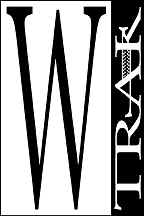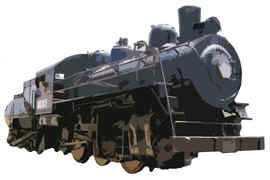

Trees, Shrubs, and Landscaping
![]()
![]() Trees are important in any layout. They underscore the scale and relationship between trains and buildings and add a touch of realism. Making a safe and durable tree presents a challenge, but upholstery fabric gathered on a carriage bolt with a padded top works well. A sewing machine with a sturdy needle and a strong fabric punch are essential. The tree trunk can be wrapped with a brown or dark grey fabric sleeve and the finished tree bolted to the table. Shrubs can be made in the same manner. Plant a group of trees for best effect.
Trees are important in any layout. They underscore the scale and relationship between trains and buildings and add a touch of realism. Making a safe and durable tree presents a challenge, but upholstery fabric gathered on a carriage bolt with a padded top works well. A sewing machine with a sturdy needle and a strong fabric punch are essential. The tree trunk can be wrapped with a brown or dark grey fabric sleeve and the finished tree bolted to the table. Shrubs can be made in the same manner. Plant a group of trees for best effect.
![]() With a model railway, trees are small and it doesn't take much fabric. Look through the remnants at your local fabric store for greens, yellows, and reds - a couple of yards will make a dozen or more trees depending on the weight of the fabric. Carry samples of what you have on hand to find complementary colors and styles.
With a model railway, trees are small and it doesn't take much fabric. Look through the remnants at your local fabric store for greens, yellows, and reds - a couple of yards will make a dozen or more trees depending on the weight of the fabric. Carry samples of what you have on hand to find complementary colors and styles.
![]()

![]() The following provides a summary of the materials needed and steps involved in making trees. If your fabric is unusually thick, fold it into just three folds instead of four. If the cloth is light, plan on five or six folds.
The following provides a summary of the materials needed and steps involved in making trees. If your fabric is unusually thick, fold it into just three folds instead of four. If the cloth is light, plan on five or six folds.

Landscaping and other Features
![]()
![]() Landscaping and fields can be simulated with coir mats (coconut fiber) or wool carpet. These can be sheared for effect. Wool and hemp carpet remnants might be found locally... Many sources exist for natural fibers in a variety of colors and textures online too.
Landscaping and fields can be simulated with coir mats (coconut fiber) or wool carpet. These can be sheared for effect. Wool and hemp carpet remnants might be found locally... Many sources exist for natural fibers in a variety of colors and textures online too.
![]()

![]() Coir mats have a distinctive texture and come in many thicknesses - including 1/2", 5/8", 3/4", 1", and 1-1/2". Coir is really hard to sculpt. Carpet shears, a hair trimmer or sheep shears might be effective and streamline the process. But coconut fiber is resilient and very hard wearing...
Coir mats have a distinctive texture and come in many thicknesses - including 1/2", 5/8", 3/4", 1", and 1-1/2". Coir is really hard to sculpt. Carpet shears, a hair trimmer or sheep shears might be effective and streamline the process. But coconut fiber is resilient and very hard wearing...
![]() 1/2" x 18" x 30" Coco Coir Mat - Natural
1/2" x 18" x 30" Coco Coir Mat - Natural
![]() 3/4" x 18" x 30" Coco Coir Mat - Natural
3/4" x 18" x 30" Coco Coir Mat - Natural
![]() 1" x 18" x 30" Coco Coir Mat - Natural
1" x 18" x 30" Coco Coir Mat - Natural
![]()